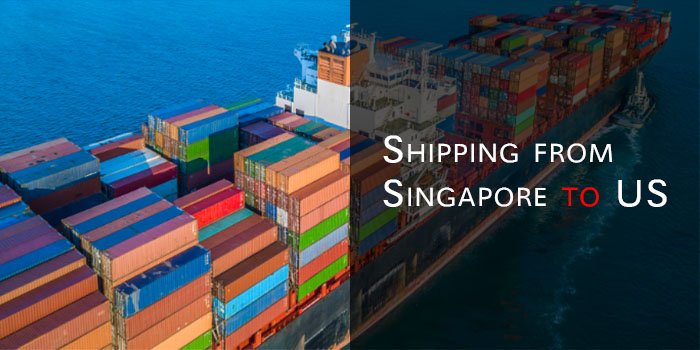Whether you’re sending a care package to a loved one in Singapore or shipping products for your business, proper packing is crucial to ensure your items arrive safely and undamaged. Singapore has strict customs regulations, and certain items may be restricted or prohibited.
Additionally, the tropical climate and potential for long transit times can pose challenges for certain types of goods. In this comprehensive guide, we’ll cover essential packing tips to help you navigate the process of sending packages to Singapore with ease.
Choose the Right Packaging Materials
The quality of your packaging materials can make a significant difference in ensuring the safe arrival of your items when you ship to Singapore from USA. Use sturdy corrugated cardboard boxes or rigid plastic containers that can withstand the rigors of international shipping. Avoid using flimsy boxes or envelopes, as they may not provide adequate protection during transit.
For additional protection, consider using bubble wrap, packing peanuts, or air-filled cushions to cushion your items inside the box. Remember to fill any empty spaces to prevent your items from shifting during transit.
Pack Fragile Items with Care
If you’re shipping fragile items, such as glassware, electronics, or delicate collectibles, take extra precautions to ensure their safe arrival. Wrap each item individually with multiple layers of bubble wrap or packing paper. You can also use specialized foam inserts or compartmentalized boxes designed for shipping fragile items.
Place the wrapped items in the center of the box, surrounded by ample cushioning material. Clearly mark the box with “Fragile” stickers or labels to alert handlers to exercise caution during transit.
Protect Against Moisture and Heat
Singapore’s tropical climate can be challenging for certain types of goods, especially those susceptible to moisture or heat damage. If you’re sending perishable items, moisture-sensitive products, or temperature-sensitive materials, consider using moisture barrier bags or desiccant packs to absorb excess moisture.
For items that require temperature control, such as medications or certain food products, use insulated packaging materials like Styrofoam coolers or thermal shipping boxes with gel packs or dry ice. Be sure to follow the specific guidelines for shipping temperature-controlled items provided by your chosen carrier.
Label Your Package Clearly
Proper labeling is essential for ensuring your package reaches its intended destination in Singapore. Use a permanent marker or shipping label to write the recipient’s full name, complete address, and contact information on the package.
Additionally, include your own return address and contact information in case the package needs to be returned or there are any issues during transit. Consider including a packing slip or inventory list inside the package to facilitate customs clearance and delivery.
Choose the Right Shipping Service
Selecting the appropriate shipping service can make a significant difference in the speed, cost, and reliability of your package’s delivery to Singapore. Consider factors such as transit time, tracking capabilities, and insurance options when choosing a carrier.
Major international carriers like FedEx, UPS, and DHL offer reliable shipping services to Singapore, with options for expedited delivery and door-to-door service. If you’re sending personal items or small packages, you may also explore more affordable options like the United States Postal Service (USPS) or other national postal services.
Insure Your Valuable Shipments
If you’re sending valuable items, such as jewelry, artwork, or high-end electronics, it’s recommended to purchase shipping insurance. Most carriers offer various levels of insurance coverage based on the declared value of your package.
Shipping insurance can provide peace of mind and financial protection in case your package is lost, damaged, or stolen during transit. Be sure to accurately declare the value of your items and retain all necessary documentation, such as proof of purchase, for potential insurance claims.
Consider Customs Duties and Taxes
When sending packages to Singapore, be aware that certain items may be subject to customs duties and taxes. These fees are typically based on the value and type of goods being imported. To avoid unexpected charges or delays, research the applicable duties and taxes for your items beforehand.
You may choose to prepay these fees with your chosen carrier or have the recipient pay them upon delivery. Clearly declaring the contents and value of your package can help streamline the customs clearance process.
Prohibited and Restricted Items
Singapore has strict regulations regarding the importation of certain items. While some items are outright prohibited, others may be allowed with specific permits or restrictions. Prohibited items in Singapore include, but are not limited to, weapons, drugs, obscene materials, and certain types of plants and animals.
Restricted items may include food products, pharmaceuticals, cosmetics, and certain electronic devices. Before packing your items, thoroughly review the list of prohibited and restricted items on the Singapore Customs website. If you’re unsure about the status of an item, it’s best to consult with the relevant authorities or refrain from including it in your package.
Latest Update: Relocating your retail store?
Documentation and Paperwork
Depending on the contents of your package, you may need to provide additional documentation or paperwork to facilitate customs clearance in Singapore. For commercial shipments or items with a high declared value, you may need to include commercial invoices, packing lists, or certificates of origin.
If you’re sending personal effects or household goods, you may need to provide a detailed inventory list and proof of residency or relocation. For certain items, such as pharmaceuticals or specialized equipment, you may need to obtain specific permits or licenses from the relevant authorities in Singapore.
Closing Thoughts
By following these packing tips, you can increase the chances of your package arriving safely and efficiently in Singapore. Remember to plan ahead, research the necessary regulations, and pack your items with care to ensure a smooth shipping experience.





